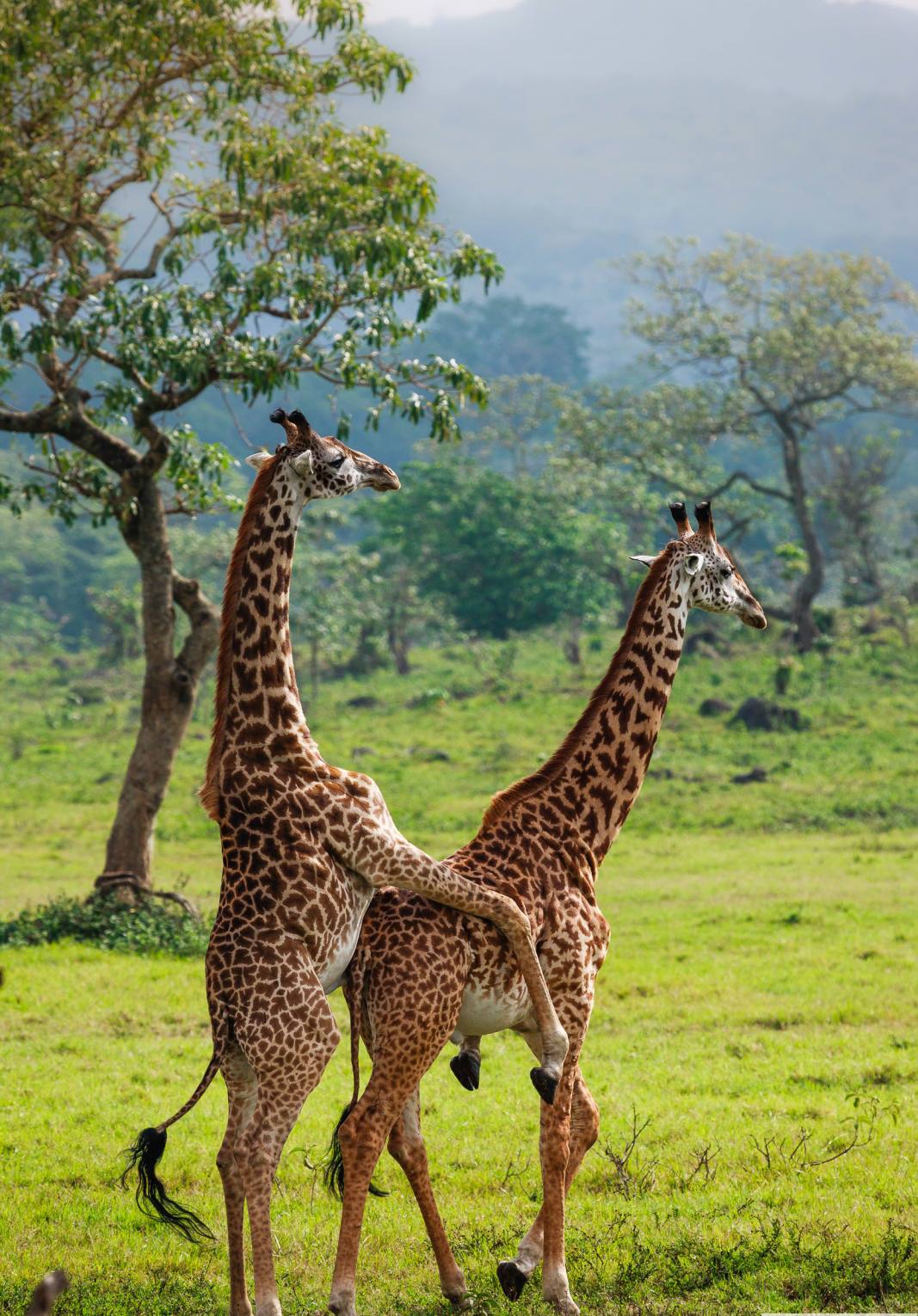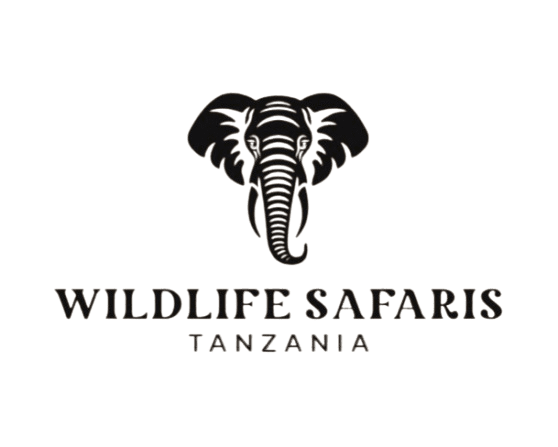Arusha National Park
As its name suggests, this park lies within easy reach of Arusha city. With that said, it’s a perfect spot for daily trips from this bustling town, where most safaris begin. The park spans 552 square kilometers, making it one of the smallest parks in Tanzania. Don’t let its size fool you: it harbors some of the most diverse wildlife, striking landscapes, lake vistas, and towering volcanoes. For that reason, it’s our secret weapon where we take our guests for a brief introduction to Tanzania’s wildlife and hiking experience. So, let’s explore this small, beautiful park.
How to get to Arusha National Park.
As we said earlier, Arusha City is the closest town to Arusha National Park. You’ll land at the Kilimanjaro International Airport. This airport receives numerous international flights and domestic ones that connect it with other airports like Dar es Salaam, Zanzibar, Nairobi, and Addis Ababa. It takes just 40 minutes of driving to reach the park’s main gate from either Kilimanjaro Airport or your hotel in Arusha.
Best time to visit Arusha National Park.
Like many parks in Tanzania, the best time is always from June to October. This period often comes with the best conditions for game viewing, such as clear skies, dry trails, short grass, and the scarcity of water, drawing animals close to the few remaining water bodies. January and February are also perfect months for game viewing and climbing Mount Meru. The landscape turns green, making perfect backdrops for wildlife photography.
 Attractions in Arusha National Park.
Attractions in Arusha National Park.
This minute park near Arusha is replete with captivating attractions, with some being famous and explored, and others less famous and visited. Let’s take a look at these wonderful attractions.
Mount Meru.
Often dubbed as the ‘little wild brother’ of Kilimanjaro, this dormant volcano is the second-highest peak in Tanzania and the fifth-highest in Africa. Its total height is 4,566 meters (14,980 ft) above sea level, and the highest peak is Socialist Peak. One of the things climbers love about Mt. Meru is its quiet, peaceful hike uphill. Some treat it as a warm-up trek, but we take it seriously because of the views and the challenge to reach its crater at its peak.
Unlike Kilimanjaro, which has more than one trekking route, Meru has one route uphill. And it takes just four days to finish the round-trip. But this is a faster climb and is often strenuous. If you’re a first-timer, we suggest you add an extra day and make it five days for acclimatization. Successful climbers usually enjoy a beautiful sunrise view, the distant views of Kilimanjaro, striking scenes of Arusha city, and the lakes of Momella. In addition, frequent wildlife encounters on the lower slopes also make the hike so interesting.
Ngurdoto Crater.
It’s sometimes referred to as “little Ngorongoro” for good reason. This crater seconds the famous Ngorongoro Crater in terms of wildlife richness. But its crater is marshy, making it ideal for the rare sitatunga antelope, which prefers swampy areas and birds like hammerkops, herons, and spur-winged geese. Ngurdoto has a grass-rich floor, hence attracting buffalo, warthogs, elephants, zebras, and antelopes among other animals. Ngurdoto Forest, which surrounds this crater, hosts primate species like black-and-white colobus monkeys and baboons. However, descending with a safari vehicle in the Ngurdoto Crater is not allowed. The ecosystem is fragile and requires strict protection. But you can watch wildlife from the crater rim.
Momella Lakes.
A trip to Arusha National Park isn’t complete without a visit to one of the Momella Lakes – a series of seven alkaline lakes northeast of this park. You can go there to do canoeing and boat cruising, often after a wonderful game drive. However, canoeing is only possible in the small Momella. On this wonderful trip, you can enjoy viewing pink flamingos and other water birds on the shoreline.
Diverse wildlife.
Simply put, Arusha National Park offers a unique introduction to Tanzania’s diverse wildlife. Here, you can spot many animals. Arusha isn’t all the Big Five park. But at least you can see four of them – lion, leopard, elephant, and buffalo, with the first two being occasional. Common encounters include giraffes, hippos, buffalo, dik-diks, elephants, waterbucks, spotted hyenas, and bushbucks.
Things to do in Arusha National Park.
Despite being small in size, Arusha has plenty of things to do. This park offers many safari adventures, with some activities being rarely found in other destinations like Serengeti National Park and Ngorongoro Crater. In addition to game drives, this park offers the following activities.
Canoeing
Canoeing is only available in a few locales in Tanzania, not in the Serengeti and Ngorongoro Conservation Area. But in Arusha, this experience is offered on the small Momella, one of the seven soda lakes within Arusha National Park. The trip offers beautiful sunset views, birds, and wildlife from the luxury of a canoe.
Climbing Mount Meru.
Ranked as Africa’s fifth-highest peak, Mount Meru is a challenge worth attempting. The climb takes 4 days up montane rainforest, heathland, and finally the arctic zone. You will enjoy the views of an Ashy Cone, a volcanic crater at the top, the town of Arusha, and Mount Kilimanjaro. In addition, you will prepare your body for a challenging hike like Kilimanjaro and other summits.
Mount Meru day hike.
If you’re not ready to take on the 4-day climb up Meru, opt for a day hike. This adventure goes up to the first hut – Miriakamba Huts – then down to the starting point, taking about 7 hours. While on this journey, you may encounter buffalo, giraffes, elephants, and monkeys on the lower slopes and a lot of birds.
The bottom line.
Arusha National Park is truly a hidden gem in northern Tanzania. The volume of visitors is yet to catch up. That means you’ll enjoy all the wildlife views and hiking on your own. We are here to help you plan your visit to Arusha National Park. Call our experts to start planning your safari or hike.

